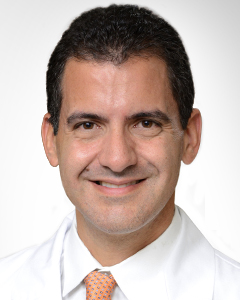According to the American Cancer Society, there will be nearly 1.7 million new cancer cases this year. Millions of patients and their families will be affected by cancer, and many questions come after a diagnosis. One that I hear most often involves how we stage cancer and how this impacts treatment options. It involves several things, so here’s some background about how we gather all the relevant information.
What Happens After Someone is Diagnosed with Cancer?
When a patient is diagnosed they go through a series of tests and imaging studies, which is the beginning of the staging process. This involves physical exams, X-rays and CT scans, which is a detailed X-ray of the body part we’re interested in. We then do a PET scan — radioactive dye that targets cancer tissues – so we can see any part of the body that is active or glowing on that scan (a PET scan may show another area that is affected, as well). This helps us pinpoint the extent of the disease.
What is Staging?
Every cancer specialist or physician needs to eventually assign a stage of disease to the patient to guide treatment and prognosis. When a patient is diagnosed with a cancer, most cancers have a staging system that defines the extent of disease. The treatment at different stages varies. The most important things are first and foremost to get the diagnosis right, and secondly, to get the staging right.
If the staging is incorrect, that will throw off not only the prognosis but also the entire treatment plan for the patient. We stage a patient after we gather all the information. What staging means is assigning that patient with our best evidence and knowledge what we think is the extent of the disease and then recommending treatment strategies for the disease.
How Can Doctors Ensure They Get the Staging Right?
Some physicians rely very heavily on radiology (PET) reports without confirming a biopsy. It’s how you interpret the imaging studies and confirm any concerning areas. If you get a patient you think is stage 1 but the PET shows something in the liver, that’s an example of someone relying only on the PET. However, the doctor should biopsy the liver legion so the patients know if he or she is dealing with a stage 4 disease.
Getting staging correct is about being thorough and not relying on assumptions. It’s not always possible to confirm what we see on the scans, but as often as possible doctors should do the necessary tests — particularly if it really impacts the stage and the treatment plan..
What About a Second Opinion?
At least 30 percent of the time we see patients who have had imaging studies done elsewhere and have an interpretation from a radiologist and have a stage. Most patients have the correct stage and are treated accordingly. However, 5 to 10 percent of the time we disagree or find unclear stages and then we do further testing and then change the stages. If the staging is incorrect, that patient could be shortchanged, be under-treated and miss an opportunity for a better result. If the patient is unaware of this or is told there’s no other option, that’s often when patients seek another opinion because another set of eyes may result in alternative treatments or another stage.
What Should Patients Know About the Staging Process?
Patients should be involved and try to educate themselves about their diagnosis and learn as much as they can. Every patient should be proactive in reviewing the scans and the results. There’s public data at the National Cancer Institute, National Cancer Society and data for every tumor out there. You can understand the stages for everything, and if something doesn’t sound right or doesn’t seem crystal clear, considering another evaluation is worthwhile.
Patients may be offered a treatment they don’t find acceptable or one that they would want. Sometimes another opinion may help them find another treatment option. Whenever there’s another opinion or discrepancy, they should look and confirm there’s not another assessment. Sometimes the patient is offered a treatment, such as open surgery, but today there are a lot of less invasive and less aggressive procedures to treat cancer. It’s worthwhile to get a second opinion to make sure all available options have been explored.
At Orlando Health Cancer Institute multidisciplinary teams meet to discuss each case so that every patient has the advantage of insight from all our experts. Patients with advanced disease (stage 4) who have already gone through multiple rounds of chemotherapy may be looking for clinical trials and investigational drugs. At our center and others in the country, there are options for state-of-the-art and innovative therapies, which is another reason to get a second opinion.
Staging is part art and part science, but mostly the latter. Our goal is to give patients the most accurate diagnosis and staging possible, so that we have the best care plan for them and can produce the best outcomes. But I’d also urge every patient who has been diagnosed with cancer to be proactive and educate themselves. Doing so could make a difference in your care.










